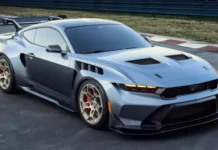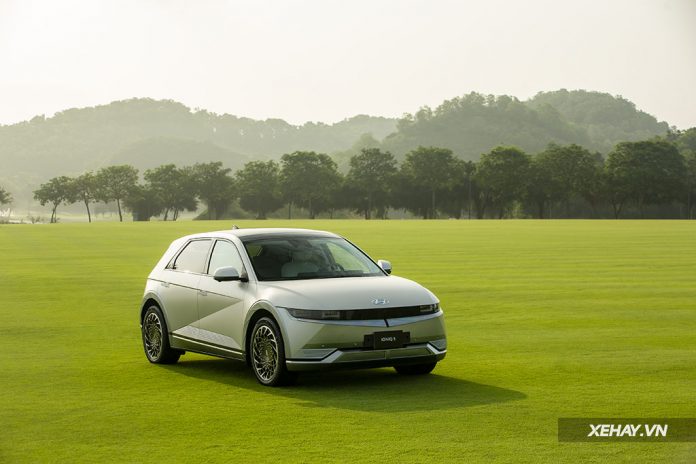Hyundai IONIQ 5 stands out as a completely different vehicle in a world where cars with internal combustion engines dominate the streets. It focuses on the technology experience and passenger comfort during travel.
Living environment has become a pressing issue worldwide. The amount of emissions into the environment is deteriorating air quality, causing deteriorating health, and eventually leading to climate change. This is particularly alarming in urban areas with high population density.
Along with the depletion of fossil energy reserves, directly proportional to the speed of exploiting it for economic development, humans are having to find ways to transition to using new renewable energy sources. This trend is evident in the automotive industry.
Large names in the world or a host of startups that have emerged like mushrooms after the rain are all turning to electric propulsion for their products, from hybrid electric vehicles and plug-in hybrid vehicles that use a combination of gasoline engines and electric motors, to fully electric vehicles (battery electric vehicles or hydrogen fuel cell vehicles).
While the global market has embraced a variety of electric vehicle models in terms of design and types, accompanied by a huge operating infrastructure from Tesla, SAIC, Volkswagen, BYD, Hyundai, in Vietnam, as a developing country with a lagging market, VinFast was the only one to introduce this new type of vehicle to the public (not to mention the expensive luxury car brands only for the high-income segment).
Following VinFast, joint venture Hyundai Thanh Cong became the second giant to quickly introduce electric vehicles to the Vietnamese people, with the product Hyundai IONIQ 5 – a completely new type of vehicle that reflects the general development trend of the world and represents a modern lifestyle.
Instead of just introducing a few electric models or individual electric vehicle models, in 2020, Hyundai Corporation announced a completely new brand called IONIQ, acting as a small branch specializing in electric vehicles (meaning “it” is only 2 years old – very modest compared to centuries-old giants in the world).
The name IONIQ is derived from the combination of “ion” – representing electrical energy and “unique” – the uniqueness and modernity of the young lifestyle, also clearly showing the type of product and potential target market segment of the brand. non-Korean brand.
With ambitions for development, Hyundai aims to sell 1 million electric vehicles globally by 2025, with the line of IONIQ 5 products already launched and the IONIQ 6 sedan and IONIQ 7 SUV models set to be unveiled in the near future.
Not only setting a rapid development target for the number of products, but Hyundai also demonstrates its determination to “do it all”. Evidence is that from the Hyundai 45 concept, IONIQ 5 introduced at the 2021 Frankfurt Motor Show quickly won a series of prestigious awards, such as the Car of the Year 2022, Electric Car of the Year 2022, and Car Design of the Year 2022.
Certainly, it is not by chance that a 2-year-old brand can rise above a series of other formidable names and “win three” so sweetly. Is the Hyundai IONIQ 5 really as “luxurious, sophisticated, and smooth” as the awards it has won? Let’s start exploring right away.
New brand but deep and wide development like a storm
Instead of introducing a few electric models or individual electric vehicle models, in 2020, the Hyundai Corporation announced a completely new brand called “IONIQ”, acting as a small branch specializing in electric vehicles (meaning “it” is only 2 years old – very modest compared to centuries-old giants in the world).
From the name of “IONIQ” combined with the phrase “electric vehicles”, derived from the word “ION” representing electrical energy and “unique” – the uniqueness and modernity of the lifestyle of young people, it also clearly demonstrates the product type and potential target market segment of the youthful non-Korean brand.







































